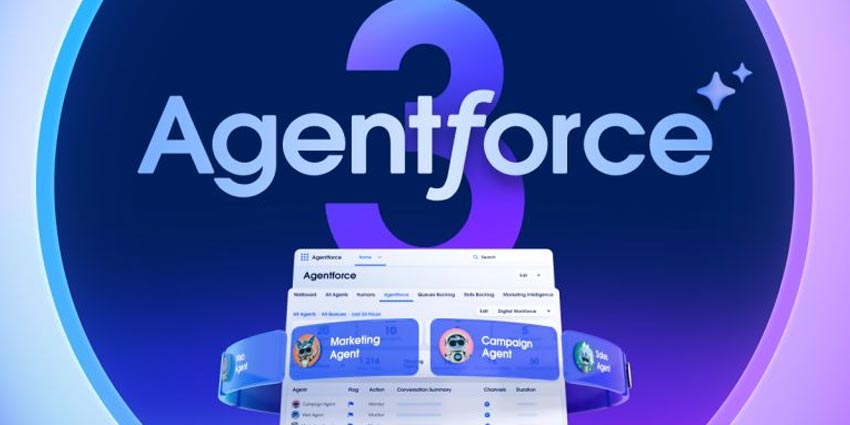Salesforce has showcased its “Customer Success Score”, which aims to engage individual functions with the broader customer experience.
The innovation launched at Dreamforce 2023, where Salesforce also unveiled its Einstein 1 platform.
That platform offers the ability to tap various data streams and enable new cross-cloud workflows.
Yet, it also posed a tricky question for customers: where do I start?
Consider a Salesforce admin in charge of Service Cloud. They must think about building those cross-cloud workflows to benefit marketing and sales.
That’s where the Customer Success Score comes in. It helps Salesforce champions look out across clouds and outside of their functional expertise.
It does so by pulling together telemetry data, telling users: How am I using my platform?
Making this point, Rebecca Wetteman, CEO & Principal Analyst at Valoir, told CX Today:
The Success Score shows us: where are the opportunities for value that my business is not capturing? And how should that influence how I think about training, user adoption efforts, utilizing certain functionalities – or whatever it is – so I can maximize value?
Indeed, Salesforce condenses all that information into a dashboard, with a primary score based on three cohorts of data and metrics. These are:
- How effectively the business has adopted and is using Salesforce products.
- How customer experience functions consume the available Salesforce resources.
- The overall health of the Salesforce implementation.
Business leaders may dig into each cohort to learn more while receiving “actionable and personalized” recommendations to improve their “Salesforce success”.
These recommendations come in a view that shows customers: here are your opportunities, here is how much you’re using the software, and here is what you need to do to get better.
Salesforce Makes Customer Experience a Team Sport
The advent of the Customer Success Score showcases how Salesforce encourages function leaders from service, sales, and marketing to think outside of their box.
Its Einstein 1 Copilot innovation – also announced during Dreamforce – offers another example of this, according to Liz Miller, VP & Principal Analyst at Constellation Research. She stated:
What I wanted to stand up and cheer about was Salesforce’s ability to show how Copilot not only helps the individual but how it also helps that individual fit into a broader customer experience strategy.
Consider the Copilot inside of Service Cloud. Yes, it suggests customer responses, offers next best action recommendations, and auto-summarizes customer interactions. But it also filters that summary back through to the broader business.
So, for example, the original seller on that account can see the customer’s sentiment and consider how that could influence their sales approach and renewal activities.
Moreover, marketing may see trends in what’s driving positive and negative sentiment and have that influence their future endeavors.
Salesforce is weaving this all together.
“GenAI can do a lot to improve functional workflows,” continued Miller. “It’s the cross-functional flows that are really tricky to do. API, microservices, JSON, all of these are great. Yet, it’s still difficult to connect all these things – and that’s what Salesforce is thinking about right now.”
Airkit – the low-/no-code self-service experience designer that Salesforce snapped up last week – fits seamlessly into this environment.
Sure, service teams will most likely utilize the tool. However, sales can use it to automate enrollment, and marketing may implement bots to present customers with discounts.
These are just two examples that show how Airkit will not just sit in one function. Thanks to Salesforce’s broader view – the CRM leader can enable its cross-cloud value.
Customer Experience Measurement Becomes More Prescriptive
Another fascinating aspect of the Customer Success Score is how it challenges conventional customer experience measurement.
Indeed, Salesforce follows the likes of Genesys – with its Experience Index – and NICE – with its Industry Benchmarks solution – in giving businesses AI-driven, targeted advice on where they can improve. Such an approach is less reliant on numbers and more prescriptive.
For instance, the Success Score gives actionable guidance to businesses when implementing systems alongside recommendations for improvements in solutions already rolled out.
In doing so, Salesforce more actively supports customers in addressing the gap between the reality of a Salesforce deployment and the picture of Nirvana it paints during its Dreamforce events.
Of course, the pessimist’s view is that the CRM leader and its fellow providers may use such measures to have customers utilize further aspects of the platform – which may increase their bills.
But, especially in the case of Salesforce, it’s more likely an endeavor to ensure customers use what they’re already paying for. An effort to ensure no app is left under-utilized.
That has proven a problem for the CRM leader, as an analysis of its recent price hikes underlined.
Yet, in leading this charge, Salesforce can support customers in moving beyond benchmarking and towards a tangible roadmap for improving business, employee, and customer outcomes.
Capture more insights from Rebecca and Liz on Einstein 1 and other Dreamforce news as they join Michael Fauscette, Founder, CEO & Chief Analyst at Arion Research, Dan Miller, Lead Analyst and Founder of Opus Research, and myself on an upcoming episode of our CX BIG News Update.
Don’t want to miss out? Subscribe to the CX Today Newsletter.










